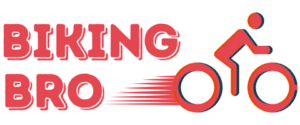As a cyclist, there are a couple of terms that you should be familiar with. One of such terms is drafting. Maybe you’ve been hearing about it, and you’ve been wondering what is drafting in cycling?
Here, I will provide you with detailed answers to this question, and also show you the advantages of cycling with a pack.
Why is Drafting in Cycling Important?
There are times when you would want to ride your road bike or cheap electric bike on your own – solo style. However, if you can adopt the concept of drafting, which basically involves riding behind a pack of other cyclists, you could save a lot of energy (statistically reaching up to 40% saved energy).
Thanks to the science of aerodynamics, riding behind another cyclist eliminates a large amount of wind resistance – The cyclists ahead face the opposing wind and create a less-resistive air path for you to ride through.
Drafting is such an efficient concept, that even when there’s a considerable gap between you and the cycling pack, you can still feel the advantageous effects of the pack ahead.
The drafting effect is proportional to the size of the group; the more cyclists there are in the pack, the more the drafting effect felt. Typically, the most forward biker feels the most wind resistance, but if the group is large enough, he/she can cut down on up to 3% of energy use.
You should also know how to go about practicing drafting, and using it to your advantage when next you’re out with your speed bike.
Here’s what you need to know:
1. Practice with a Friend
Since you’re just going to start drafting, you might struggle with it if you’re in a considerably large group. The best thing to do is to practice drafting with a friend before joining a larger pack.
The advantage of cycling behind your friend and using a bicycle speedometer is that you can both agree on a pace that isn’t too fast for you. Since you’re just beginning, you might not be able to keep up with the other riders in a pack.
Keep practicing with your friend until you’re confident enough to join a group and keep up with them. It’s advisable to practice with someone who is more experienced than you are.
What you really need to focus on while practicing is learning how to close the gap between you and the last biker behind the group. If you are confident enough to ride close to the nearest cycler, you’ll do fine in a pack.
2. Check the Direction of Wind
If you can pay attention to wind direction, you would be able to use drafting efficiently.
The idea behind utilizing your knowledge of wind direction is all about positioning yourself advantageously behind the nearest biker. The biker directly in front of you is supposed to face the resisting wind while blocking you from it.
If you can position yourself perfectly and maintain correct cycling posture, in such a way that the first rider takes the lion share of resisting wind, you would save a lot of energy.
Can I Draft Uphill?
But does drafting work uphill? If you do a lot of uphill cycling, and you’re hoping to adopt drafting as an energy-saving technique, here’s what you should know.
The first thing you should know is that cycling speed is directly proportional to wind resistance. If cycling pace is on the low, wind resistance would also drop. This is usually the case when you’re cycling up a slope. Since gravity is pulling you back, you won’t go as fast as you averagely would on flat ground.
You’d be surprised that, because of gravity’s effect, uphill cycling takes up as much as 80 percent energy on a fair slope. Meanwhile, riding against air drag would take up a small 10 percent of your energy.
With this analysis, you can see that you won’t gain much advantage from drafting during an uphill ride, compared to when you’re facing wind resistance on a flat plain. Cyclists who often ride uphill are more concerned about reducing their weight in order to effectively fight gravity – a light-weight cruiser bike is what you’ll need.
For this reason, you wouldn’t find experienced uphill cyclists trying to adopt drafting as an energy-saving technique – it simply doesn’t work.
As seen in David P. Swain’s writing, “Cycling Uphill and Downhill”, he believed that if cyclists are riding at significant speeds, drafting is pointless, since air drag can hardly be felt at low pace.
Regardless of this fact, we can still see professional cyclists adopting this technique when riding up a slope. The thing is, as they climb up these slopes at impressive speeds, they try to remain seated in their saddles to conserve strength. Besides, you have a better chance of winning in a race if you can efficiently conserve your energy.
Apart from the physical benefits that are associated with closely riding behind others, you can also benefit mentally. Having other cyclists ahead of you can boost your morale and help you go at a higher speed than you averagely would. Bullhorn bike handlebars would help a lot in this case as well.
Conclusion
With everything that has been said in this article, you should now have the answers you seek to drafting in cycling and how it works.
If you have been riding solo in the past, and have never tried group riding, you now have enough reason to. You save as much as 40% energy cycling with a group than when you’re going solo.
Before you join a large group, you should first practice drafting with an experienced friend – this will help you build the confidence and experience that you need to ride closely behind a larger group.
Apart from the psychological effects of riding uphill behind a group, you won’t gain much when it comes to drafting. Drafting is most effective against wind resistance and not gravity.
